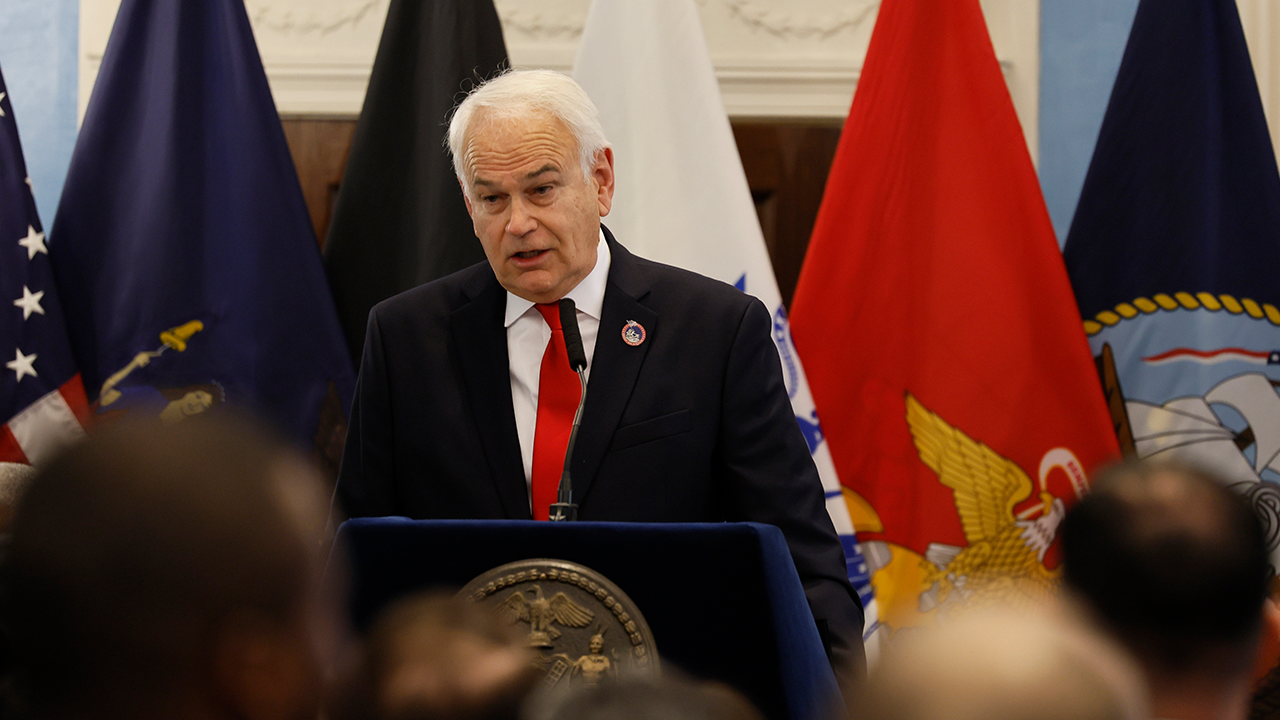I began my public health career more than 20 years ago, at a time when H.I.V. was ravaging many countries around the world. The U.S. government’s strategic response to attack this cruel disease abroad was PEPFAR, an American initiative that has saved more than 25 million lives and shaped my understanding of what muscular public health policy could accomplish.
Today, as New York City’s health commissioner and a practicing doctor, I see a desperate need for similar focus and ambition here in the United States. The major health crisis we’re facing is not Covid or a single epidemic. It’s not cancer, diabetes or drug overdoses alone. It is the national emergency of worsened life expectancy in America. Combating our falling life spans could be a unifying focus of a second Biden administration, since it will take all of the government along with other sectors, working in alignment and investing at scale, to set our nation out on a path for longer, healthier lives.
Since World War II, no single period has taken more years off our collective lives than the three years from 2019 to 2021, following nearly a decade of flattening. While Covid was a factor, it was far from the only one. Countries of similar economic strength suffered less drastic drops in life span, and they have mostly regained the ground they lost during Covid. Because of chronic diseases like diabetes and heart disease — along with drug overdoses, suicide, violence — the United States has not. Some groups, such as Black Americans, have suffered even larger declines. Those without bachelor degrees have lost more years than their college-educated peers.
To reverse these trends, America should commit resources to a coordinated industrial policy for health. Industrial policy calls for government action and private markets to function together to achieve a shared goal in the face of a complex challenge. When the country needed transcontinental railroads in the 19th century, we built them through coordinated action led by the federal government. When developing countries needed H.I.V. medications, we created a mechanism for companies to produce them cheaply while building the health systems to deliver them to patients in need. When the world needed a Covid-19 vaccine, we combined government-funded research with private initiative and an enormous distribution campaign.
What would it look like, then, if we devoted ourselves to solving the problem of our decreased life spans?
First, we would have to break our addiction to clinical care designed to react to new ailments, and spend more on preventing health issues in the first place. The United States spends lavishly on clinical care, doling out $4.5 trillion — more than 17 percent of our gross domestic product — in 2022 alone. Prevention accounts for less than 3 percent of our overall health spending. That ratio buys us some of the poorest health outcomes and shortest life expectancies in the developed world.
We should greatly increase spending on prevention in two main ways. The first is to directly increase funding for public health departments to expand their core work in areas like health education, infectious disease surveillance, chronic disease screening, mental health services and doula programs to address maternal and child health — activities that have proven impacts on preventing disease and long-term health issues. The creation of a national public-private fund could draw in investments from industry leaders to match expanded government spending and send the money directly to community-based organizations that run many local and state government public health programs.
The second part is to redirect hospital and health care funding for preventive health care and for social services critical to long-term health. We’ve seen successful recent examples in how so-called Centers for Medicare and Medicaid Services waivers have enabled the use of clinical funding for nutrition programs in places like North Carolina, and in California where waivers were used to fund housing services for people facing homelessness. The Biden administration has approved eight Medicaid waivers, including one recently approved for New York. This number, along with increased waiver authority for social needs in Medicare and incentives for employer plans, should be sharply expanded in a second Biden term.
To achieve an industrial policy for health, we also would need to make it fundamentally easier and cheaper to make healthy choices, and harder and more costly to make unhealthy ones, for individuals and for industries. That means seriously considering actions like imposing excise taxes on sugary drinks and ultra-processed foods; banning menthol cigarettes, as proposed by the Food and Drug Administration, and establishing minimum unit pricing for alcohol. When implemented even in the face of tricky politics, these and similar actions have been associated with positive outcomes. We should reduce added salt and sugar in our food system through a combination of voluntary commitments, F.D.A. rules around labeling and further incentivizing fresh food purchasing for SNAP- and WIC-eligible families. We also need more incentives for healthy behavior, like consumer savings on insurance plans for joining a gym or purchasing fresh produce at the grocery store.
A rethinking of the way we plan and pay for health would require policymakers to ask different questions. If new housing were being planned, officials wouldn’t simply be expected to ask how many families could live there, how much would it cost and whether this area was zoned correctly. They would also have to answer: Would this make my constituents sicker or healthier? Would it lead to longer or shorter lives? And this could influence how many units to build, where to build them and how to set rents and further advance affordability? To answer those questions, we could embrace a new metric that projects the impact of any given initiative on mortality and life span — a life span return on investment, or L.R.O.I.
Government spending could be formally aligned with L.R.O.I. projections, and private-sector incentives could be aligned around the same framework. For instance, in tackling diabetes, policymakers could compare the L.R.O.I. of taxing sugar and fast foods versus subsidizing the manufacturing and cost of new drugs like Ozempic. They might do both, or neither — but at least they would be making an informed choice based on concrete impact on life and death.
The idea of incorporating health directly into policy decisions across the board is not new: From 2012 to 2016, eight states and the District of Columbia passed “Health in All Policies” laws, intended to orient the apparatus of government toward well-being. Though well intended, these initiatives lacked the funding, metrics and understanding needed to move the needle on population health outcomes.
Those shortcomings, and the stark life span drop we saw in our own data, informed the November 2023 start of HealthyNYC, the Adams administration’s plan to achieve healthier, longer lives in New York City. In 2020 alone, life expectancy here dropped an astonishing 4.6 years, to 78 — the worst decline in the country. We have set an ambitious goal of reaching 83 years by 2030, which would be among the highest in the country. We’ll do this by tackling the leading causes of overall and premature death — from heart disease and overdoses to suicides and cancer.
At the same time, we are creating models so leaders across the city government can begin to interrogate spending decisions based on a version of L.R.O.I. The New York City Council even passed a law to codify HealthyNYC into planning, obliging regular progress reports and a reassessment of life expectancy goals every five years, ensuring that this transcends electoral cycles and the priorities of any single administration — something that will be essential for any federal effort to be successful.
A national project along these same lines is beyond what most believe our deeply divided political system can accomplish. That’s exactly why we need to try. There is an opportunity for President Biden to announce a national commitment to reclaiming American life expectancy as a centerpiece of his campaign and a second term. The president has previously framed the election in November as a choice between two competing visions for the future: a backward-looking politics of grievance, division and demonization, and an inspirational, aspirational and hopeful vision for the future of America.
An industrial policy for health could offer hope and direction for the future, and a salve for polarization. It’s hard to imagine a more unifying proposition than “we all deserve to live longer, healthier lives — and ensuring that we do should be our government’s No. 1 priority.”






